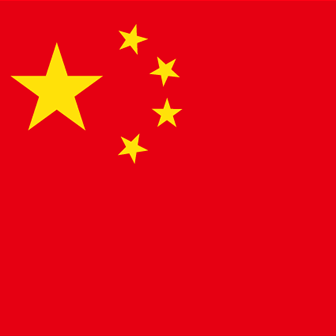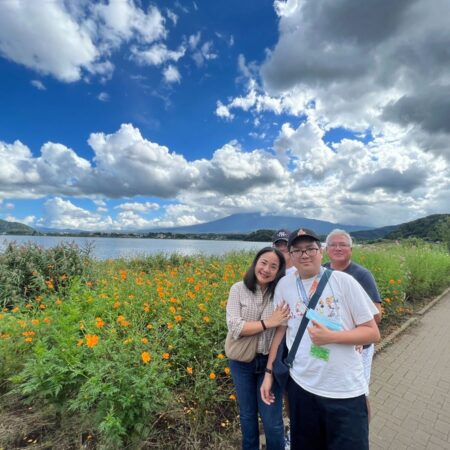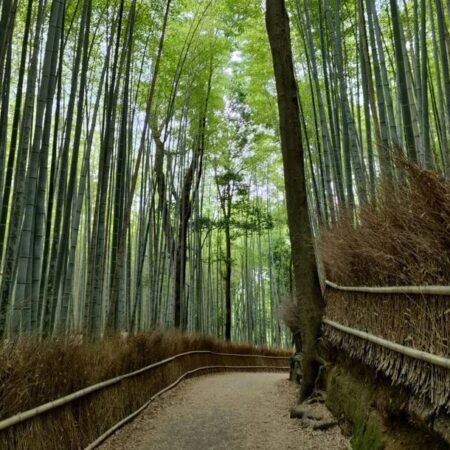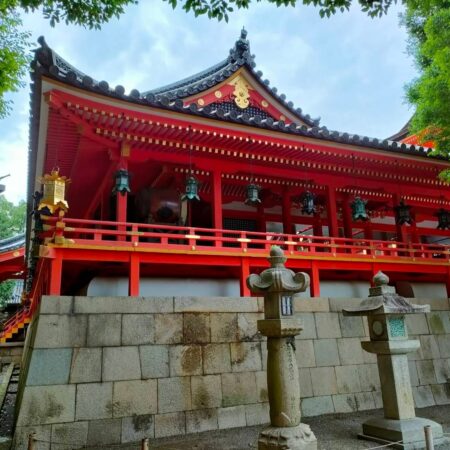Mimuroto-ji Temple was founded about 1200 years ago. Many people visit as the tenth place of pilgrimage of the Saigoku Kannon Pilgrimage. Mimuroto-ji Temple is also known as a temple of flowers, famous for azaleas in May, hydrangeas in June, and lotuses in July, and autumn colors around late November. The vast garden is filled with 20,000 hydrangeas of about 50 species. At the back of the flower garden is a Japanese garden called Yorakuen. Yorakuen consists of a pond garden and a dry landscape garden. Yorakuen garden was created by Nakane Kinsaku, one of the most famous Japanese gardeners in 20th century, who is also known for the Adachi Museum of Art in Shimane Prefecture.
Mimuroto-ji Temple / Uji, Kyoto
Mimuroto-ji Temple / Uji, Kyoto
Iwashimizu Hachiman-gu Shrine, Yawata city, Kyoto
Iwashimizu Hachiman-gu Shrine, Yawata city, Kyoto
Iwashimizu Hachiman-gu Shrine is located on Mt. Otokoyama, in the southwest of Kyoto. Its main hall has the unique Hachiman-zukuri architecture style, consisting of two bulidings in parrallel and designated as National Treasure in Japan. It also has an interesting connection to the life and work of Thomas Edison, who used bamboo collected in Mt. Otokoyama to make filaments for his first electric light bulb in 1880.
Togetsu-kyo Bridge
Togetsu-kyo Bridge / Arashiyama in Kyoto
The Togetsu-kyo Bridge is a symbol of Arashiyama. In 13th century, when Emperor Kameyama saw a moon move above the bridge, he said, "It looks as if the clear moon were walking over the bridge", so it was named "Togetsu-kyo", that means “the bridge of passing moon”.
Chazuke Shop
Chazuke Shop "OBUYA" at Nishiki Market in Kyoto
Let's enjoy Chazuke!! When you come to Nishiki Market in Kyoto, why not go to "OBUYA (Chazuke Shop)"? Chazuke is a rice bawl with dashi soup poured over it. "OBUYA" is run by a 90-year-old fish shop. So you can also enjoy it with fresh raw fish.
Ikkyuji Temple
Ikkyuji Temple (Shuon-an Hemitage) Ikkyu is a quick-witted priest
Ikkyu is known as the "quick-witted" priest. The Zen priest Ikkyu restored Ikkyu - ji Temple when he was 63 years old. He became the chief priest of Daitoku - ji Temple at the age of 81 - but lived at this temple, traveling back and forth between Ikkyu - ji Temple and Daitoku - ji Temple. Beyond the main gate is the stone-paved approach to the temple. Also at this temple are Hojo Garden, designated as a place of scenic beauty, and the main temple, designated as an Important Cultural Property.





























